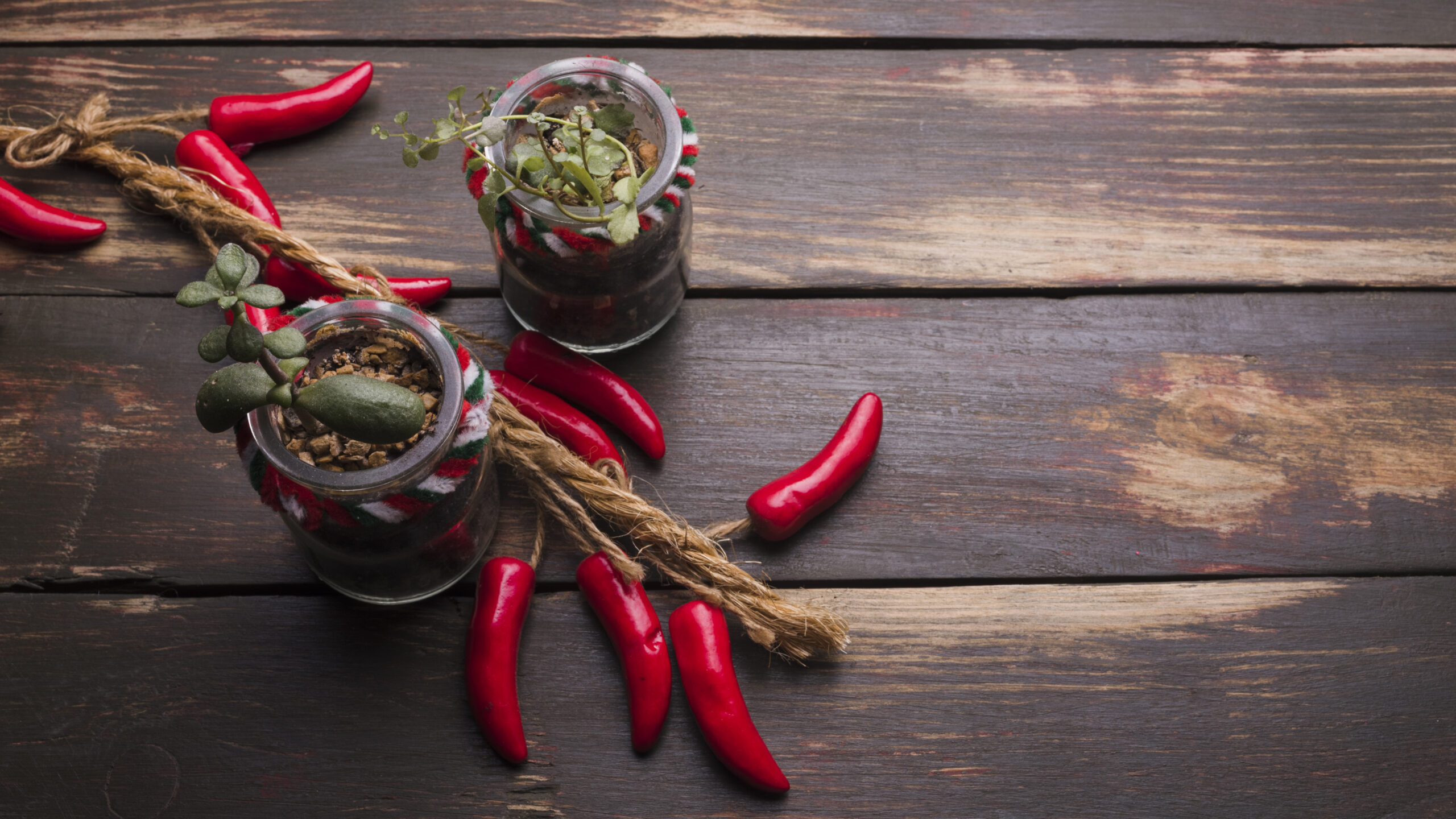Fresno chili is one of those peppers that quietly climbs into your kitchen and suddenly becomes indispensable. It is vibrant, moderately hot, deliciously fruity, and flexible enough to be used in almost every type of cuisine. While many people mistake the Fresno chili for the more common jalapeño, the Fresno has its own personality brighter in flavor, smoother in heat, and more elegant in the way it complements dishes. This article explores Fresno chili in depth, covering its history, characteristics, benefits, cultivation techniques, and creative culinary uses.
Understanding the Fresno Chili Pepper
The Fresno chili was developed in 1952 by Clarence Brown Hamlin, who named it after the city of Fresno, California. Since then, it has become a beloved ingredient across the American West and beyond. Classified scientifically as Capsicum annuum, this medium-sized pepper typically grows to about 2–3 inches long and 1 inch wide. It begins as a bright green pepper and matures to a vibrant red, becoming sweeter and more complex as it ripens. Unlike jalapeños, the Fresno chili has thinner walls and a slightly fruitier flavor profile. It also offers a cleaner, sharper heat that doesn’t overpower the palate. This makes it ideal for fresh salsas, hot sauces, pickling, and garnishing.
Heat Profile and Taste Notes
If you’re wondering whether Fresno chilis are spicy, the answer is yes but not overwhelmingly so. They fall between 2,500 and 10,000 Scoville Heat Units (SHU), which places them in the mild-to-medium heat range. When green, they taste fresh, grassy, and tangy; when red, they develop a deeper fruit-like sweetness and a mild smoky undertone. What makes their heat enjoyable is the balance: the spice hits quickly but fades gracefully, letting the other flavors shine.
Nutritional Value and Health Benefits
Like most chili peppers, Fresno chilis pack a nutritional punch. They are rich in vitamins A, B6, and C, as well as antioxidants like capsaicin. These nutrients support immune function, reduce inflammation, and potentially boost metabolism.
Here is a simple table highlighting the nutritional components of a typical Fresno chili per 100 grams:
| Component | Amount | Key Benefit |
|---|---|---|
| Vitamin C | ~120 mg | Boosts immunity and skin health |
| Vitamin A | ~490 IU | Supports vision and cell growth |
| Vitamin B6 | ~0.5 mg | Helps brain development |
| Fiber | ~1.5 g | Supports digestion |
| Capsaicin | Variable | Anti-inflammatory, boosts metabolism |
| Potassium | ~320 mg | Supports heart function |
Growing Fresno Chili: From Seed to Harvest
If you love gardening or want to enjoy fresh homegrown peppers, Fresno chili is a fantastic crop to cultivate. It thrives in warm climates and requires moderate maintenance.
Choosing the Right Seeds
Select high-quality seeds to ensure strong germination. Many growers opt for heirloom or organic seed varieties to guarantee natural flavor and optimal plant health.
Ideal Soil and Climate
Fresno chili plants prefer warm temperatures ideally between 70°F and 95°F (21°C to 35°C). They grow best in well-drained soil enriched with compost or organic matter. The soil pH should be slightly acidic to neutral, around 6.0 to 7.0.
Planting and Germination
Start seeds indoors 8–10 weeks before the last frost date. Seeds usually germinate within 10–14 days if kept at a warm temperature of about 80°F (27°C). Once seedlings have several leaves, you can transplant them outdoors, ensuring they get full sunlight for at least 6–8 hours daily.
Watering and Fertilizing
Water the plants consistently but avoid overwatering to prevent root rot. The soil should stay moist but never soggy. Fertilize every 2–3 weeks with a balanced fertilizer containing nitrogen, phosphorus, and potassium.
Pest and Disease Control
Common issues include aphids, whiteflies, and fungal infections. Natural insecticidal soap and proper spacing between plants can reduce these risks. Avoid wetting leaves excessively, especially at night, to prevent diseases such as powdery mildew.
Harvesting
Green Fresno chilis can be harvested around 60–70 days after planting; red ones usually need about 80–90 days. The ripe red peppers are sweeter and hotter, offering a more complex flavor. Use scissors or garden shears to cut the peppers cleanly from the plant.
Fresno Chili in the Kitchen: Flavor Meets Versatility
Cooks and chefs love Fresno chilis for their flexibility. Whether raw, roasted, pickled, or pureed, they add a bright, flavorful kick without overwhelming a dish.
Fresh Uses
Green Fresnos shine in salsas, salads, and garnishes. They pair beautifully with citrus, tomatoes, onions, and avocados. Finely chopped Fresno peppers can elevate guacamole, tacos, soups, and dips.
Roasting and Grilling
Roasting brings out the pepper’s sweetness and smoky notes. Simply place them over an open flame or in the oven until the skin blisters. Peel the skin, slice the flesh, and use them in sandwiches, pastas, or grain bowls.
Pickling for Long-Term Enjoyment
Pickled Fresno peppers offer a tangy, mildly spicy topping perfect for burgers, nachos, sandwiches, and salads. A simple brine of vinegar, water, sugar, garlic, and salt transforms the peppers into a flavorful condiment.
Making Homemade Fresno Chili Hot Sauce
One of the most popular uses is turning the peppers into a smooth, vibrant hot sauce. Fresno hot sauce often resembles sriracha but has a brighter, fruitier taste. Blend roasted Fresno peppers with vinegar, garlic, and a touch of sugar, then simmer until thick. You can store it in sterilized bottles or jars.
Cultural Influence and Growing Popularity
Although developed in the United States, Fresno chili’s influence has spread worldwide. Its versatility has made it a favorite in cuisines such as Mexican, Thai, Vietnamese, and Caribbean cooking. It is also widely used in plant-based recipes, where its fresh heat enhances vegetable-forward dishes. Many chefs prefer Fresno over jalapeño due to its deeper, rounder flavor. In fine dining, red Fresno slices often appear as garnishes because of their visually stunning color.
Choosing and Storing Fresno Chili
When shopping, look for peppers that are firm, bright, smooth-skinned, and free from wrinkles. Green Fresno chilis should feel crisp, while red ones should be slightly softer but still plump. Store them in the refrigerator in a breathable produce bag. Green Fresnos last up to two weeks, while red ones last about one week. For long-term storage, you can freeze sliced Fresno peppers or dry them for later use.
Unique Recipes Featuring Fresno Chili
To bring these peppers to life, here are a few creative ways to use them at home:
Fresno Chili Salsa Fresca
Combine chopped Fresno peppers, tomatoes, red onion, cilantro, lime juice, salt, and garlic. This bright, fresh salsa pairs beautifully with grilled chicken, fish tacos, or tortilla chips.
Spicy Fresno Chili Honey Glaze
Simmer chopped Fresno peppers with honey, vinegar, and garlic to create a sticky-sweet glaze. Brush it on roasted vegetables, chicken wings, or salmon.
Fresno Chili Cream Sauce
Blend cooked Fresno peppers with cream, butter, and parmesan to make a silky, mildly spicy pasta sauce.
Fresno Chili Pickle Jars
Add sliced Fresno peppers to a jar with vinegar, salt, sugar, mustard seeds, and garlic. Let it rest for two days and enjoy vibrant homemade pickled peppers.
Why Fresno Chili Stands Out
The Fresno chili’s charm lies in its balance moderate heat, fruity depth, and culinary flexibility. It fills the gap between too-mild peppers and intensely spicy varieties. For many home cooks, once they start using Fresno chilis, they become a staple in the kitchen. The pepper’s vibrant color also makes it a visual favorite in dishes, enhancing presentation while contributing flavor. And for gardeners, the Fresno chili offers a rewarding growing experience with consistent yields and minimal fuss.
Final Thoughts
Fresno chili is more than just a pepper; it is a versatile, flavorful ingredient with its own story, culture, and culinary value. From home cooking to global cuisine, from gardening to nutrition, this pepper continues to win hearts with its approachable heat and vibrant character. Whether you enjoy it fresh, roasted, pickled, or blended into a sauce, the Fresno chili offers endless possibilities. If you are looking to broaden your cooking palette or enrich your home garden, Fresno chilis are a brilliant choice. They bring warmth, brightness, and creativity to any kitchen and once you begin using them, you’ll realize that this humble pepper is truly extraordinary.








